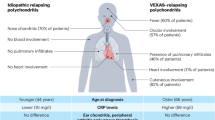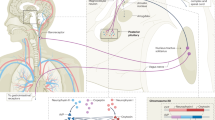Abstract
IT is known that there are unpredictable apparent remissions of clinical symptoms enjoyed by hæmophiliacs; but these remissions have not been correlated with any influences such as time of year, food eaten, weather conditions, other diseases, or physical condition of the patient. The lack of ‘antihæmophilic factor’ associated with classic hæmophilia has been attributed1 to a hypothetical block during the metabolic synthesis of the factor resulting from the action of the mutant gene of hæmophilia, such as occurs in the nutritional mutants of Neurospora and in eye pigment development in certain mutants of Drosophila 2. In the cases of Neurospora, and Drosophila, and other organisms studied, the addition of the substances the synthesis of which is blocked genetically results in normal metabolism. If this is the case in hæmophilia, it may be possible to supply, by mouth or injection, the unavailable material necessary for normal production of the hæmostatic substance lacking in hæmophiliacs. However, the few instances of success of various supplements, such as vitamins E and B12, X-rays, and œstrogen, have not been confirmed3–7.
This is a preview of subscription content, access via your institution
Access options
Subscribe to this journal
Receive 51 print issues and online access
$199.00 per year
only $3.90 per issue
Buy this article
- Purchase on Springer Link
- Instant access to full article PDF
Prices may be subject to local taxes which are calculated during checkout
Similar content being viewed by others
References
Brinkhous, K. M., and Graham, J. B., Blood, 9, 254 (1954).
The literature is extensive on the nutritional mutants. A good summary of these phenomena may be found in “Genetics and Metabolism”, Wagner, R. F., and Mitchell, H. K. (Wiley, New York, 1955).
Kohl, H., Deutsch. med. Wschr., 72, 279 (1947).
Taubmann, G., Deutsch. med. Wschr., 74, 1338 (1949).
Prosperi, P., and Lottini, A., Sperimentale, 100, 258 (1950).
Sotgiu, G., and Lenzi, G., Haematologica, 37, 321 (1953).
Triebel, R., Klin. Wschr., 22, 747 (1943).
Zucker, M. B., Amer. J. Physiol., 148, 275 (1947).
Spaet, T. H., Blood, 7, 641 (1952).
Author information
Authors and Affiliations
Rights and permissions
About this article
Cite this article
BOUDREAUX, H., FRAMPTON, V. A Peanut Factor for Hæmostasis in Hæmophilia. Nature 185, 469–470 (1960). https://doi.org/10.1038/185469a0
Issue Date:
DOI: https://doi.org/10.1038/185469a0
Comments
By submitting a comment you agree to abide by our Terms and Community Guidelines. If you find something abusive or that does not comply with our terms or guidelines please flag it as inappropriate.



